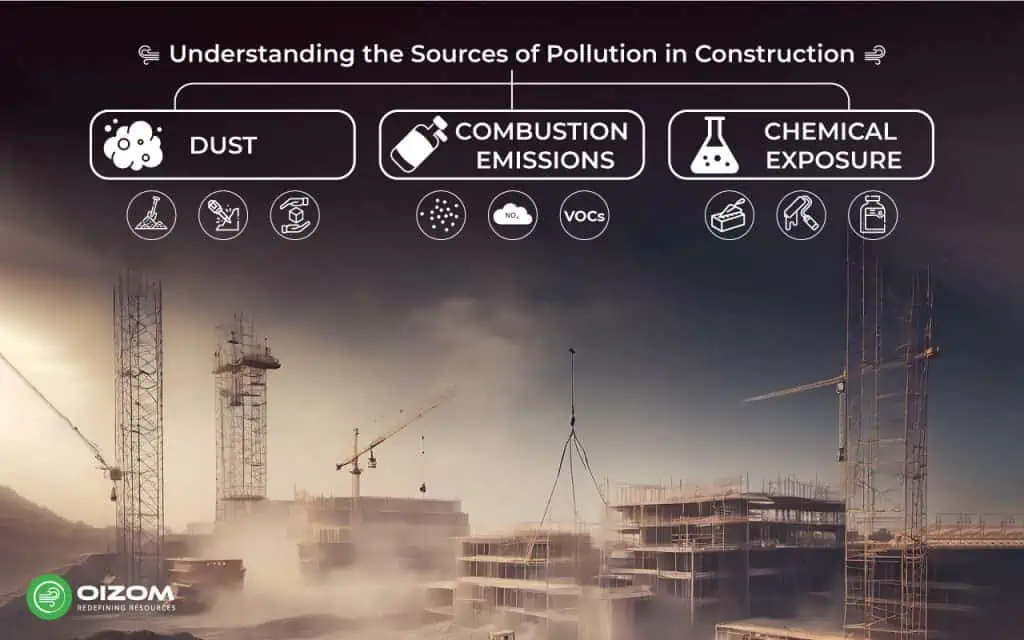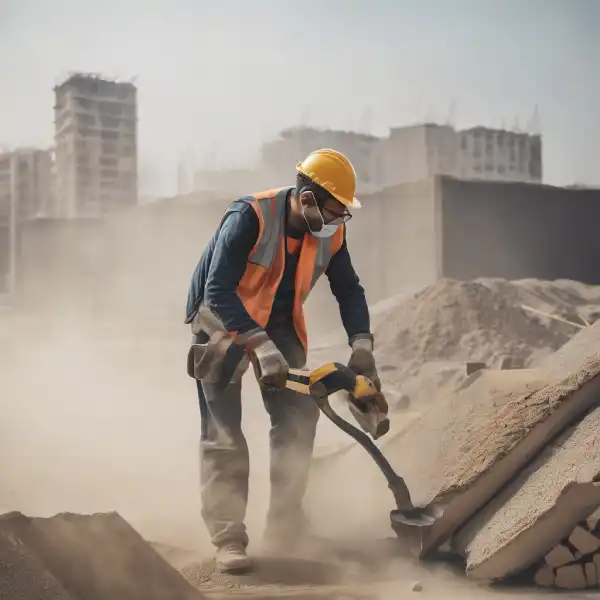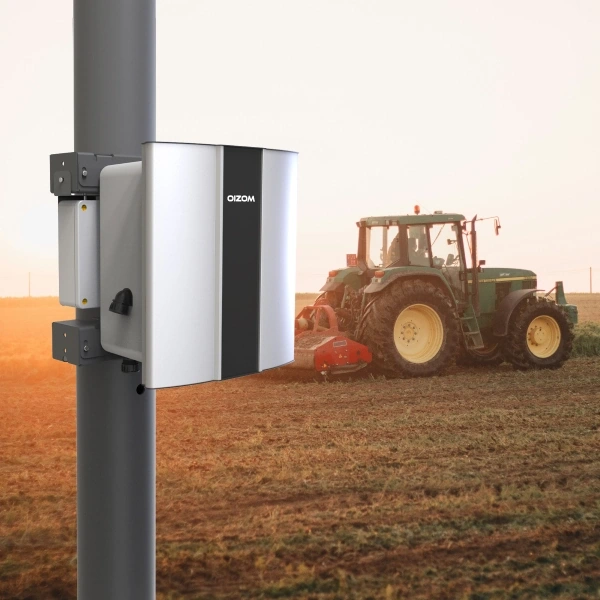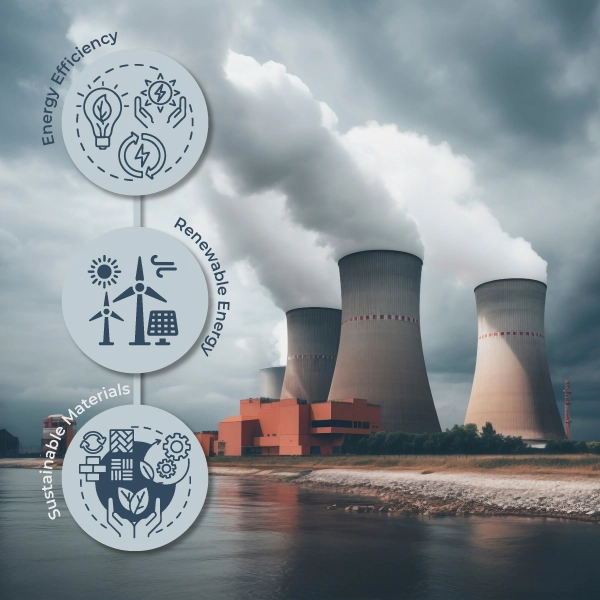Air quality, an invisible yet critical aspect of our daily lives, has emerged as a growing concern in the modern world, especially in bustling urban areas and industrial hotspots. Among the many sectors grappling with the effects of poor air quality, the construction industry stands as a notable contender. With construction sites often shrouded in swirling dust, belching machinery emissions, and an array of pollutants, the health implications for workers and nearby communities can be dire.
In this captivating blog post, we will delve into the hidden health hazards of poor air quality on construction sites, uncovering the crucial need for vigilant monitoring and innovative mitigation strategies to protect both the industry and the people it serves.
Understanding the Sources of Pollution in Construction

Various factors contribute to poor air quality in construction sites, including:
- Dust: Construction activities such as excavation, demolition, and material handling generate significant amounts of dust. This dust often contains harmful particles, such as silica, which can lead to respiratory issues when inhaled.
- Combustion Emissions: Construction machinery and vehicles that run on diesel fuel emit a range of pollutants, including particulate matter (PM), nitrogen oxides (NOx), and volatile organic compounds (VOCs). These pollutants can contribute to respiratory and cardiovascular problems, as well as increase the risk of cancer.
- Chemical Exposure: Construction materials, paints, and solvents often contain chemicals that can be harmful when inhaled or absorbed through the skin. Exposure to these chemicals can cause both short-term and long-term health problems.
Health Effects of Poor Air Quality in Construction
Exposure to poor air quality in construction sites can lead to various health issues. These health effects can be broadly categorised into respiratory, cardiovascular, and neurological issues, as well as other health impacts.
- Respiratory Issues: Prolonged exposure to dust, especially silica dust, can result in various respiratory problems, including:
- Chronic Obstructive Pulmonary Disease (COPD): This is a group of lung diseases that cause breathing difficulties and includes chronic bronchitis and emphysema.
- Silicosis: This is a lung disease caused by the inhalation of silica dust, leading to inflammation and scarring of the lung tissue.
- Asthma: Construction workers exposed to dust and chemicals are at an increased risk of developing or exacerbating asthma symptoms.
2. Cardiovascular Issues: Exposure to air pollutants such as PM and NOx can lead to cardiovascular problems, including:
- Increased blood pressure: Air pollution has been linked to increased blood pressure, increasing the risk of hypertension and other cardiovascular diseases.
- Heart attacks and strokes: Long-term exposure to air pollution can increase the risk of heart attacks and strokes, particularly in individuals with pre-existing heart conditions.
3. Neurological Issues: Exposure to certain chemicals and air pollutants can result in neurological, such as:
- Cognitive impairment: Studies have shown that exposure to air pollution can negatively impact cognitive function, particularly in children and older adults.
- Headaches and dizziness: Exposure to high levels of certain air pollutants, such as VOCs, can lead to headaches and dizziness.
4. Other Health Impacts: Poor air quality can also contribute to other health problems, including:
- Cancer: Exposure to certain air pollutants, such as benzene and asbestos, can increase the risk of cancer.
- Skin and eye irritation: Contact with dust and chemicals can cause skin and eye irritation, leading to dermatitis and conjunctivitis.
Monitoring and Mitigating the Health Effects of Poor Air Quality in Construction
To reduce the health risks associated with poor air quality in construction, it is essential to monitor and mitigate air Quality levels at construction sites. Some strategies for achieving this include:
- Monitoring air quality: Regular monitoring of air quality at construction sites can help identify potential health hazards and inform appropriate mitigation measures. Technologies such as Oizom’s air quality monitoring solutions provide accurate and real-time data on air pollution levels, enabling construction managers to make informed decisions about air quality management.
- Implementing dust control measures: Dust control measures, such as wetting down materials and surfaces, using dust suppression systems, and covering stockpiles, can help reduce dust emissions at construction sites.
- Maintaining and upgrading machinery: Regular maintenance of construction machinery can help reduce emissions from combustion engines. Additionally, upgrading to newer, more fuel-efficient equipment or adopting electric or hybrid machinery can help lower pollutant emissions.
- Using low-emission construction materials: Opting for low-emission paints, solvents, and other construction materials can help minimise the release of harmful chemicals into the air.
- Providing personal protective equipment (PPE): Ensuring that construction workers have access to appropriate PPE, such as respirators and protective clothing, can help reduce their exposure to pollutants and decrease the risk of health problems.
- Training and awareness: Providing training to construction workers on the risks associated with poor air quality and the proper use of PPE can help improve their understanding of air pollution and its health effects, as well as promote safer work practices.
Wrapping Up
Poor air quality in construction poses significant health risks for both workers and the surrounding community. Understanding the sources of pollution and the potential health effects is crucial for implementing effective monitoring and mitigation strategies. By adopting proactive ways to reduce air pollution at construction sites, construction companies can foster a healthier work environment and promote a more sustainable approach to development.
Utilizing air quality monitoring solutions like Oizom’s can help construction managers better understand the air quality conditions at their sites, allowing them to take appropriate action to protect workers’ health and minimize environmental impacts.
It’s important to deal with construction pollution so that building things doesn’t harm the environment and people’s health.






